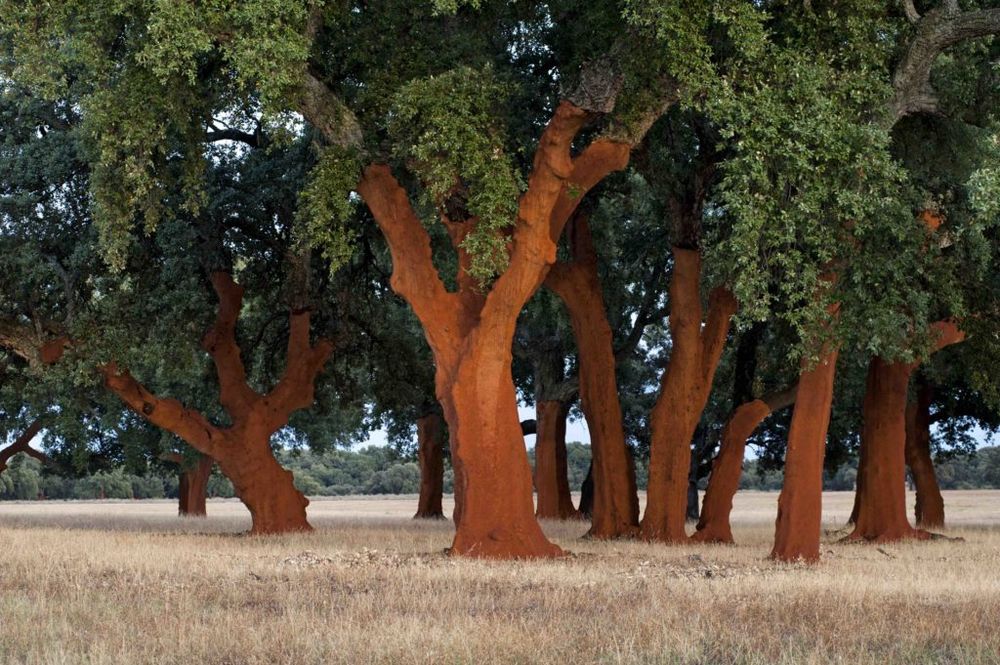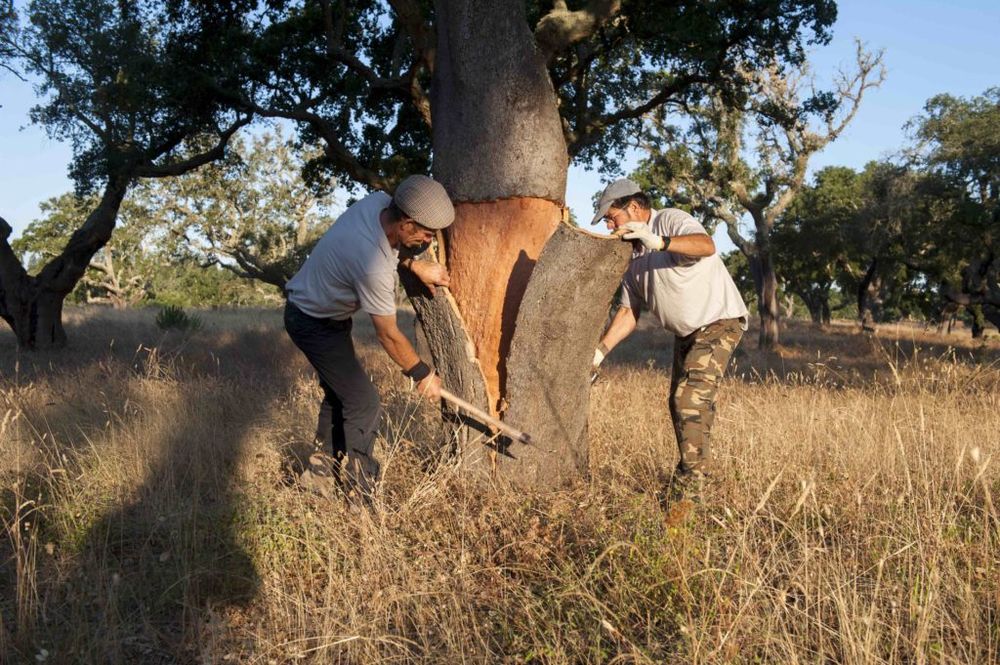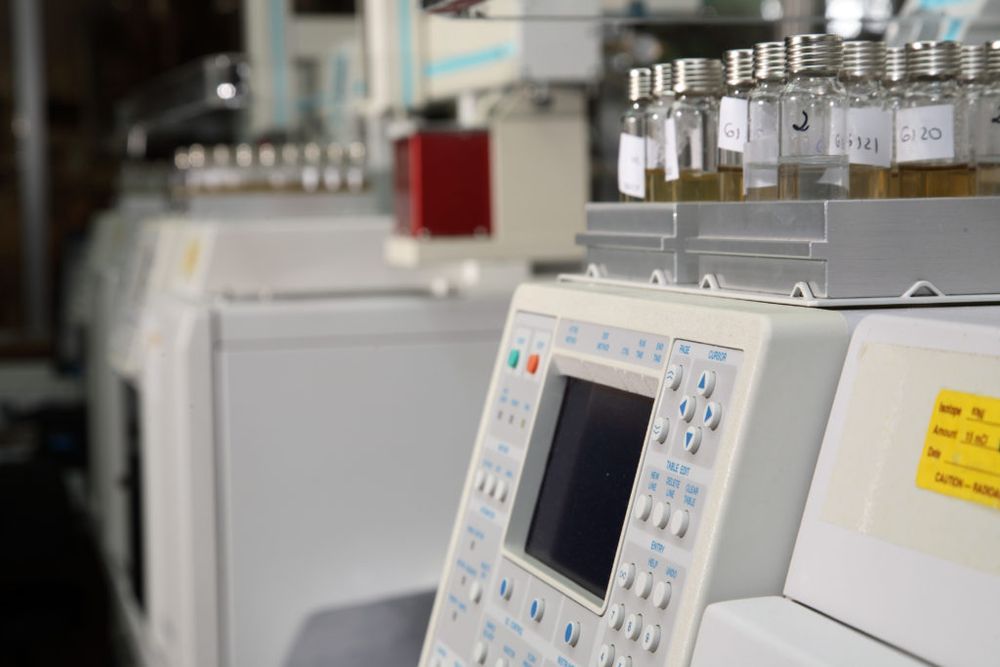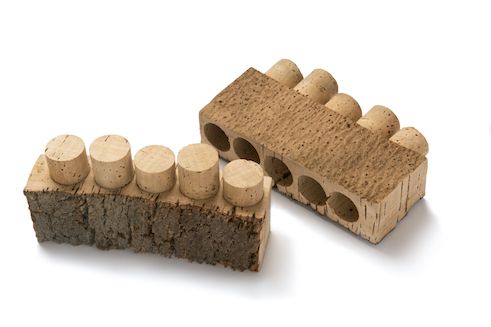“Amorim has always advocated that science can highlight the problem as well as the solutions, whether that realm is TCA taints or carbon emissions,” writes Turner.
For the last 30 years, the cork industry has been under attack. Wine producers that didn’t have easy geographical access to cork started using other closures and, in order to convince the world they were an improvement, ‘laid into’ the cork industry to extol the virtues of the screwcap or the glass stoppers, or whatever else they put on the market. Any wine fault became a cork problem. It was too easy.
How do you win an argument like that? Well, if you’re Amorim, the industry leader in cork, the best way is to lean heavily on a scientific Research and Development department. They’ve now reduced TCA prevalence to less than 0.4%, and from 2021 will offer a non-detectable TCA performance on all their wine corks.
And yet they still have all these bright young minds in their R&D department thinking ‘What else does cork do?’ Of course there are commercial drivers, but the main motivation is ‘How else do we benefit the wine industry?’
This has led to an Ernst & Young Lifecycle Assessment study commissioned by Amorim to definitively study the carbon footprint of a single cork. Previously it was assumed, based solely on production, that a cork stopper had a small carbon footprint, similar to that of other wine bottle closures. The findings of the study, however, were amazing and can have far reaching implications for both the cork and wine industry alike.

There are 2.2 million hectares of cork trees across the Mediterranean basin and in Portugal have been protected by law since the 1100s
Why measuring our carbon footprint matters
It is important to put the findings of the study into a global context. Greenhouse gases are contributing to global warming and climate change and, although a lot of greenhouse gases occur naturally, we now have undeniable evidence that human activity is creating (mostly unnecessary) extra emissions. Carbon compounds, be them Monoxide, Dioxide, or Methane and more, are the more obvious offenders.
Carbon emissions targets are the bread and butter of every UN Council meeting these days. They will never go far enough right now, given the amount of self-interest and lobbying groups kicking around, but we do have generally accepted reduction targets now. These mean that by 2050, if we’re to hit these targets, we need to plant the equivalent of 1.2 trillion trees worldwide. Broken down that means that, in the UK alone, that’s 3 billion trees, so 100 million per year for the next 30 years. Whether or not that’s achievable is anyone’s guess, but it does highlight the magnitude of the issue.
What struggles the wine trade has with its carbon footprint
Now in theory you might think that the wine industry is carbon capturing industry. How many billion vines are out there in the world photosynthesizing throughout their growing season? Throw in some grass and cover crops down the middle of the rows, hedgerow and surrounding forests and you’d be forgiven for thinking this industry should very much be part of the solution, not the problem. Unfortunately, it doesn’t quite work out like that.
Winemaking techniques unavoidably produce emissions. Not least the fermentation process itself producing CO2. Lots of work is being done in the wine and brewing industry to capture, store, and repurpose the emissions from fermentation, but the technology is currently expensive due to its infancy[1]. We then have ‘the joys’ of the glass bottle, produced by furnaces that are never switched off for their decades’ long lifecycle. If wine was invented today, would it be put in a glass bottle? No. But, our inability as consumers to move onto alternative packaging shows no signs of letting up.
We also have the inevitable transport footprint. This has been an issue tackled aggressively by the more remote winemaking countries for years. Perversely a bottle of wine from Bordeaux in a shop in London will probably have a similar footprint to a bottle from New Zealand. The former being transported by road, the latter in bulk by ship with economies of scale and bottling sites in the UK.

“Now we know, through an independent ‘cradle to gate’ analysis, that these cork stoppers have such a negative carbon footprint,” Carlos de Jesus
Amorim’s carbon reduction studies
Amorim has always been renowned for its research and development programmes. In 1976 Américo Amorim formed the first advertising committee for the cork industry to teach foreign users about the benefits of cork, which led eventually to the Cork Congress initiatives between the cork industry and university departments the world over. Amorim has always advocated that science can highlight the problem as well as the solutions, whether that realm is TCA taints or carbon emissions.
There is clearly something special about the 2.2 million hectares of cork trees across the Mediterranean basin. They’ve been protected by law since the 1100s in Portugal and the cork industry itself is inherently carbon negative. Different companies are of course run differently, so the environmental balance is not the same all around, but all draw from the same pool of resources. CO2is, of course, retained by the cork forest as a whole and contributes to overall carbon capture. For Amorim specifically, 63% of its energy needs comes from its own cork dust – zero emission biomass – that incidentally has been in use across the entire cork industry since the 1960s.
The results of the Lifecycle Assessment study, independently performed by consultancy giant Ernst & Young, can now actually put a figure on that carbon capture potential and state as scientific fact that a natural cork captures 309g of CO2, and a natural cork for sparkling wine captures 562g of CO2. If we use a widely used figure of 1200g of equivalent CO2as the carbon footprint of an average bottle of wine[2], then the use of cork stoppers can reduce this by a quarter in a still wine, and nearly half in a sparkling wine.
“If we want to preserve cork oak trees – which are never felled and can live more than 200 years – we need to use more cork stoppers,” explains Carlos de Jesus, Amorim’s head of marketing and communication. “Now we know, through an independent ‘cradle to gate’ analysis, that these cork stoppers have such a negative carbon footprint they can offset the carbon emission of other elements of the production chain such as bottles. In fact, they are the go-to answer for everyone’s environmental responsibility.”
Compared to other parts of packaging
Of the aforementioned 1200g of CO2for each bottle, about half of that is accounted for by packaging materials – almost 85% is the glass bottle, and then you throw in secondary packaging like the cardboard box or label production.
Of the other forms of closures like screwcaps, or plastic corks, or even the widely touted introduction of sugar palm ‘corks’, none of them are massively carbon heavy but none of them are inherently carbon negative like natural corks. Screwcaps aren’t biodegradable and still use a lot of single-use plastic for the closure. Plastic closures seem to be price-led and are inherently problematic with the distinction between ‘recyclable’ and ‘recycled’ often blurred. Even new ideas like the sugar palm ‘corks’ are being ruined by monoculture production and the destruction of biodiversity heartlands, akin to the palm oil and avocado industries.
Changing the consumer and market’s preference for glass bottles will be a long-fought fight, with short-term gains possible through an emphasis on recycling. However, when it comes to reducing its carbon impact, the evidence is overwhelmingly there for natural cork stoppers.

At €135 a day during harvest, it’s one of, if not the highest paid agricultural jobs in the world.
Sustainability and the cork industry
The wine industry is under pressure to move away from monoculture towards biodiversity. The cork forests of Portugal are one of the UN’s 36 global biodiversity hotspots, a list that includes the Amazon Rainforest and the tropics of Costa Rica. On the upside that means they’re recognised as extremely biologically rich and globally important, but on the downside it means that they’re deeply threatened. As an industry, we can help that.
Amorim began to buy its own forests as recently as the end of 2018. Its expectation is that the expected growth rate of cork is so high that if they don’t sort out the supply chain now then in 25 years (mature after 25 years, harvest every 9 years from there), then the forests might not be as protected as they might be, and the industry will be in trouble. As a family owned company, they are now used to playing the long game.
Sustainability also includes the economic and cultural aspects of cork production. Harvesting is a highly skilled job, often with many generations of knowhow behind every cork harvester. At €135 a day during harvest, it’s one of, if not the highest paid agricultural jobs in the world.
The ability to bring money into the local region doesn’t stop there. The UN’s FCCC[3]scheme currently rates the value of one tonne of offset carbon at about €7.50. When the global markets finally get round to setting up a more effective carbon credits exchange, that’s many millions of euros extra coming into the cork forest regions every year.

Amorim has always leaned heavily on its R&D department. They’ve now reduced TCA prevalence to less than 0.4%.
Simple win in the industry’s eco battle
The findings of EY’s Lifecycle Assessment study won’t be lost on the building or aeronautic industries both of which use the flexibility, water tightness, and heat resistance properties of cork and cork agglomerates to great effect. The challenge is on the wine industry, the world’s largest consumer of cork, to ensure that it also takes the findings to heart.
13.2 billion natural corks were produced in 2018[4], a potential carbon capture of just over 40 million tonnes (if we just use the 309g per cork from Amorim’s findings) which, added to the biodiversity and sustainability elements of the cork industry, makes impressive reading.
When it comes to the fast moving goalposts of what we know about climate change, our impact upon it, and the potential efforts we can make to reduce or even reverse the effect, it’s got to be about what we know now, not what we thought was an issue 30, 20, or even just 10 years ago.
About the Studies:
These studies were conducted by Ernst & Young, and commissioned by Corticeira Amorim. For full details of the study, including methodology and results, please email Carlos de Jesus, Head of Communications, on carlos.dejesus@amorim.com
About Corticeira Amorim:
Corticeira Amorim is the leading world producer of cork products, having been involved in the sector since 1870. The company’s product portfolio covers various sectors, including, among others, wine, construction, flooring, aeronautics, automotive and footwear. It has implemented an integrated production process that ensures that no cork is wasted, and it supports various initiatives for collecting and recycling cork stoppers across five continents.
1 C-Capture in Leeds, UK – https://www.c-capture.co.uk/
3 https://www.feelgoodgrapes.com/offsetting
4 APCOR figures (2019)
































